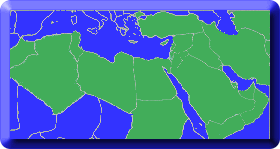
Topics in Middle Eastern and North African Economies
Document Type
Article
Publication Date
5-1-2021
Journal Title
Topics in Middle Eastern and North African Economies
Volume
23
Issue
1
Publisher
Middle East Economic Association and Loyola University Chicago
Abstract
Humanity has suffered from COVID 19 since December 2019. A global pandemic was declared by World Health Organization on 11 March 2021 (WHO, 2019). Pandemics such as bleeding fever, cholera, SARS, MERS, and swine flu have affected humanity throughout history. During pandemic periods, the measures, panic, decline in labor power, and consumption cause economic crises. Like other pandemics, COVID 19 has negative effects on countries, businesses, and households economically (Eichenbaum, Rebelo, and Trabandt, 2020: 1). Many studies have found a statistically significant relationship between public health variables (life expectancy, maternal mortality, etc.) and the economy (Bloom and Sachs, 1998; Robalino et al., 2002). One of the public health elements that have direct or indirect effects on economies is an infectious disease outbreak. Infectious disease outbreaks directly affect economies with their impact on the health system, medical care, and supporting services (Mckibbin and Fernando 2020: 3). In the literature, studies are analyzing economic indicators with epidemics of different dates (Chen et al., 2018; Gong, Jiang, and Lu, 2020; McKibbin and Sidorenko, 2006). Although only one and a half years old, the economic effects of COVID 19 are extensively studied in the literature. Zhang, Hu, and Ji (2020) analyze the economic impact of Covid 19 in 12 countries. Zhang, Hu, and Ji (2020) argue that pandemic increases the risk in global markets, but the uncertainty and risk in countries change according to the situation of the pandemic. Huo and Qiu (2020) analyze the consequences of COVID 19 on the stock market in China with the Cumulative abnormal returns method. According to Huo and Qiu (2020), the retail investor reacted more strongly to the lockdown news. Baker et al. (2020) argue that the consumption of households changed radically during the COVID 19 pandemic process. During the pandemic period, households’ credit card, retail, and food items spending increased. Bartik et al. (2020) survey to put forward the COVID 19’s economic effect on small businesses in the USA. The survey includes 5.819 participants. 43% of the participants temporarily closed their businesses. Businesses reduced their employee numbers by % 40 percent. Ludvigson, Ma, and Ng (2020) argue that production, labor market activities, and employment were affected by COVID 19 negatively in the world. This study measures the relationship between COVID 19 case and death effect on financial indicators with the Toda Yamamoto Causality test.
ISSN
2334-282X
Recommended Citation
Arzova, Sabri Burak and Şahin, Bertaç Şakir, "The Impact Of Covid 19 On The Selected Turkish Financial Indicators: Empirical Evidence From Toda Yamamoto Causality Test". Topics in Middle Eastern and North African Economies, electronic journal, 23, 1, Middle East Economic Association and Loyola University Chicago, 2021, http://www.luc.edu/orgs/meea/
Creative Commons License

This work is licensed under a Creative Commons Attribution-Noncommercial-No Derivative Works 3.0 License.
Copyright Statement
© The Author(s), 2021



Comments
Presentation of the articles in the Topics in Middle Eastern and North African Economies was made possible by a limited license granted to Loyola University Chicago and Middle East Economics Association from the authors who have retained all copyrights in the articles.